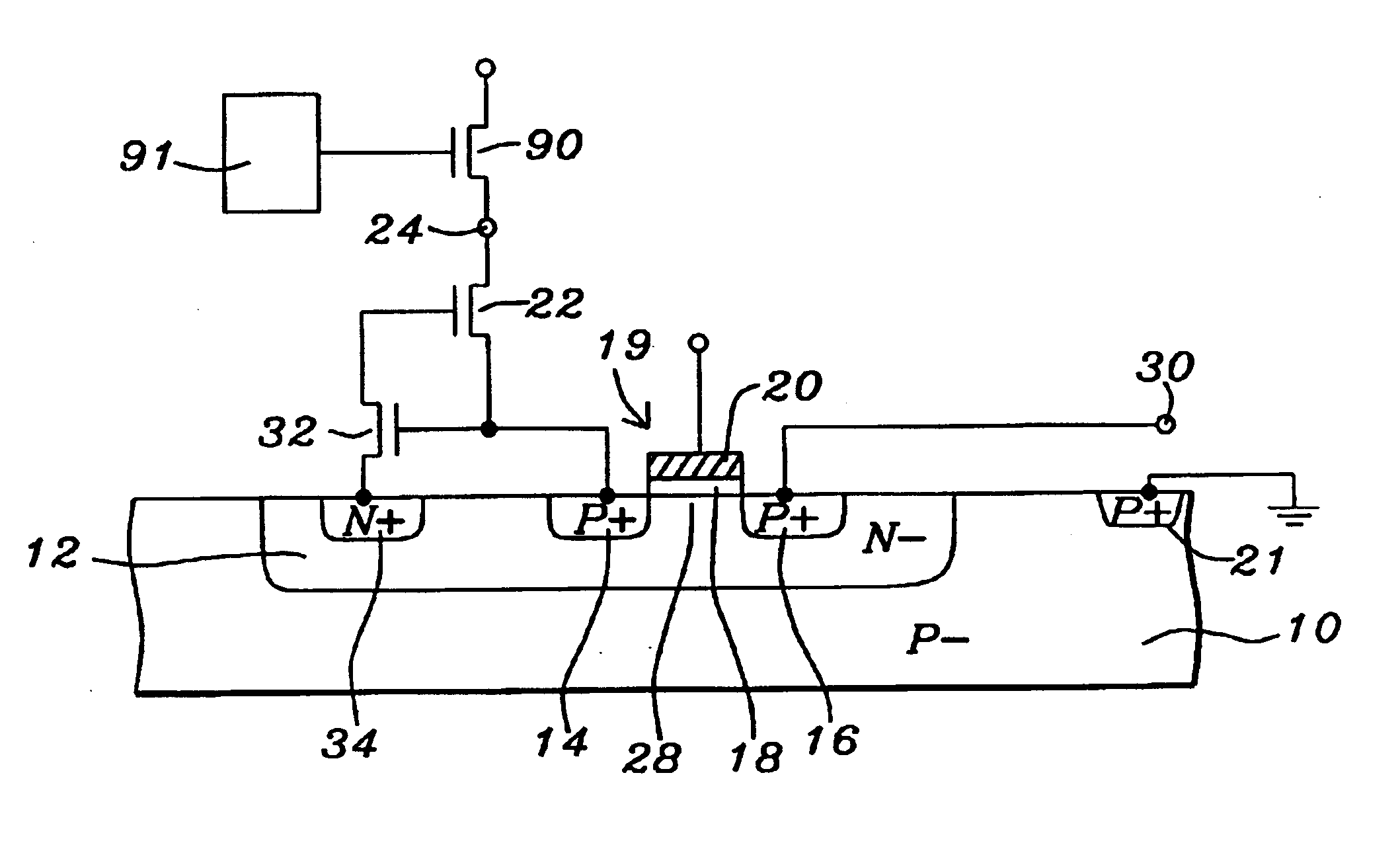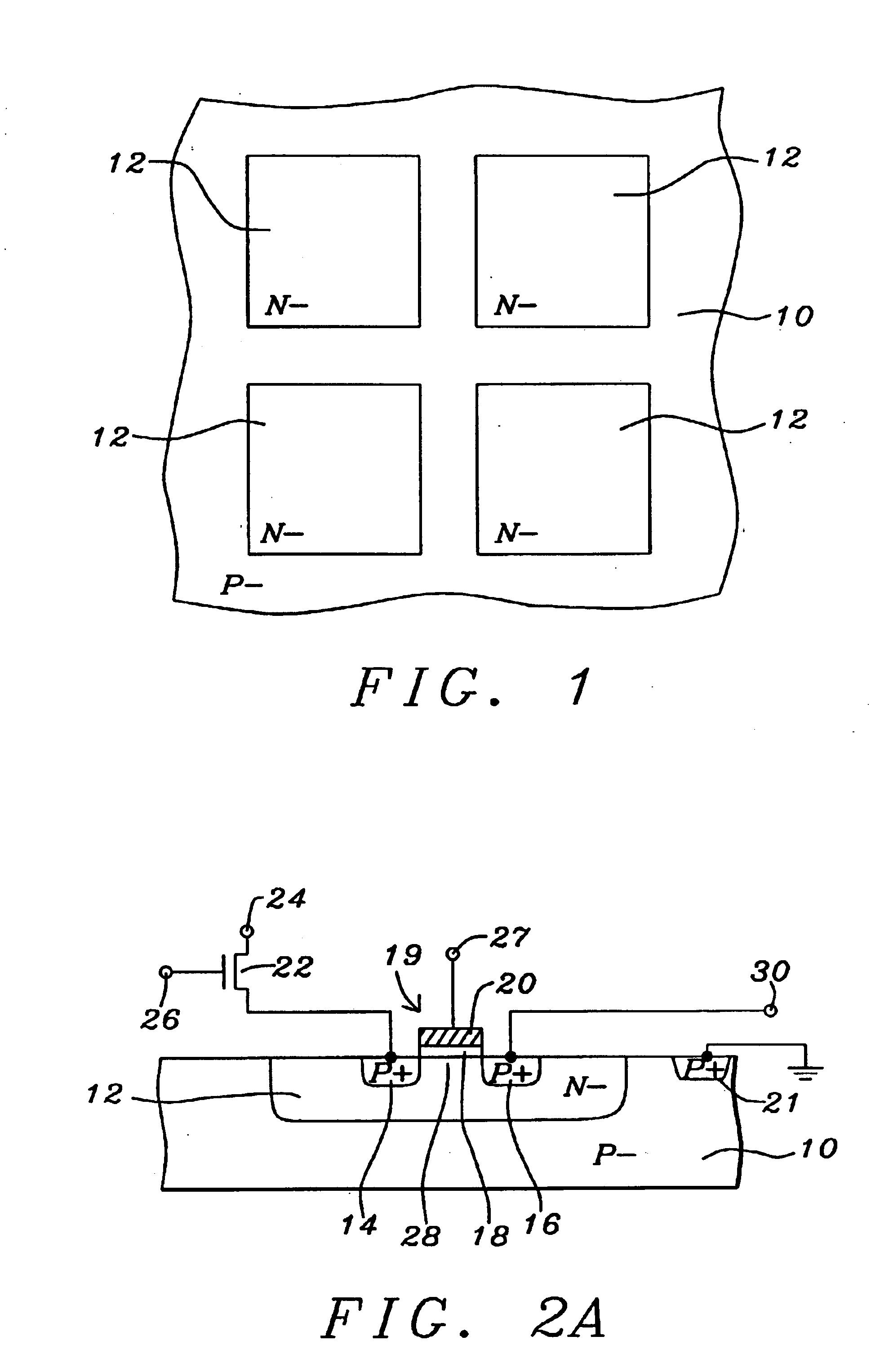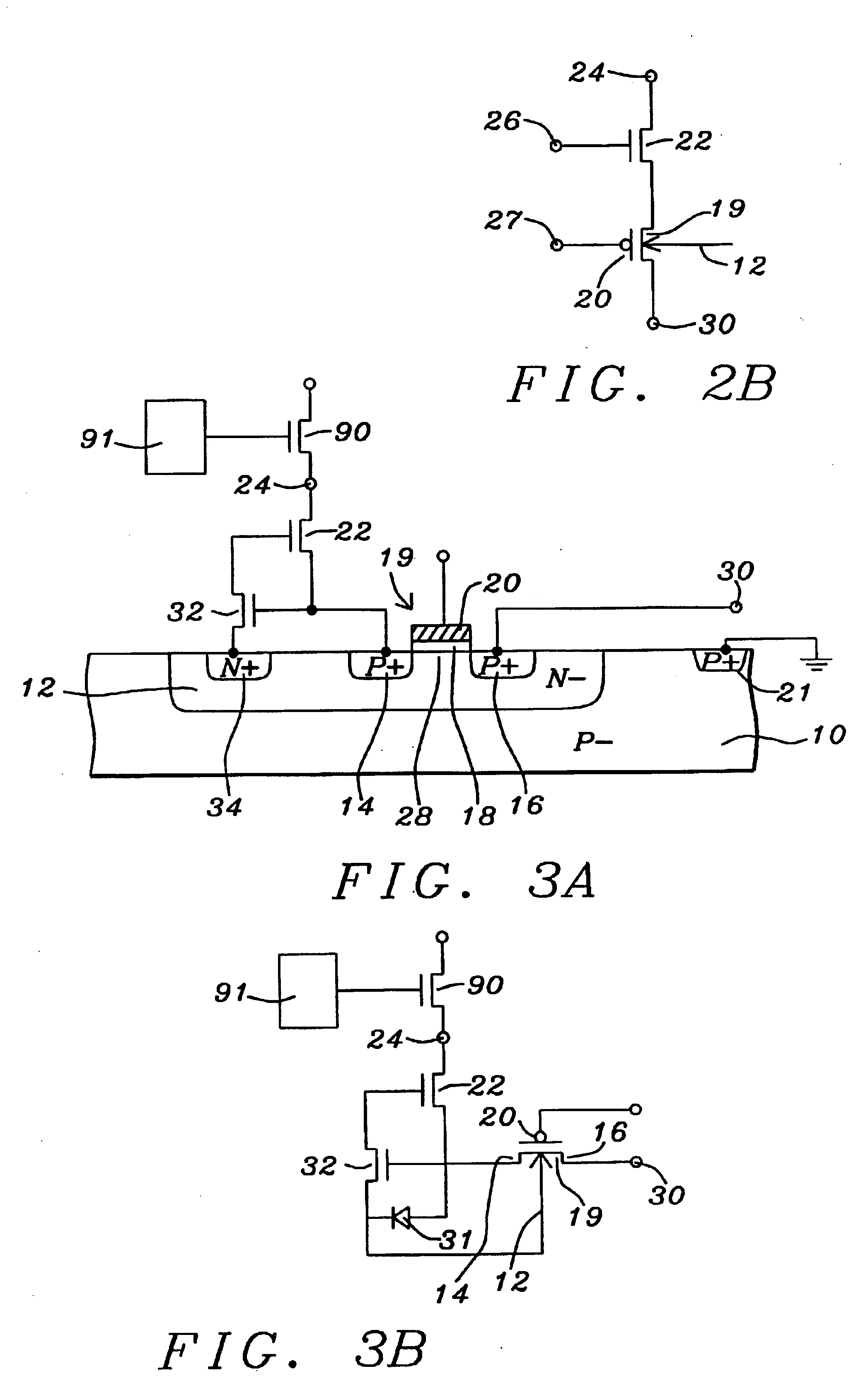CMOS pixel with dual gate PMOS
- Summary
- Abstract
- Description
- Claims
- Application Information
AI Technical Summary
Benefits of technology
Problems solved by technology
Method used
Image
Examples
Embodiment Construction
Refer now to FIGS. 1-4B of the drawings for a description of the preferred embodiments of this invention. FIG. 1 shows a top view of a number of N− wells 12 formed of N− type silicon in a P− type silicon substrate 10. Typically, but not necessarily, the P− type silicon substrate 10 is a P− type epitaxial silicon layer. FIG. 1 shows four N− wells 12 as an example however the actual number will be larger or smaller, typically smaller, arranged in an array. Each N− well 12 forms a PN junction diode with the surrounding P− silicon material. The N− wells 12 are biased such that the potential of the N− wells 12 are higher than the P− silicon material 10 and the PN junction is back biased. This back biased PN junction forms a pixel which can accumulate carriers generated by an external signal to be read during a readout period. Typically, but not necessarily, the external signal is optical radiation and the carriers are photo-generated carriers.
FIG. 2A shows a cross section view of one of ...
PUM
 Login to View More
Login to View More Abstract
Description
Claims
Application Information
 Login to View More
Login to View More - R&D
- Intellectual Property
- Life Sciences
- Materials
- Tech Scout
- Unparalleled Data Quality
- Higher Quality Content
- 60% Fewer Hallucinations
Browse by: Latest US Patents, China's latest patents, Technical Efficacy Thesaurus, Application Domain, Technology Topic, Popular Technical Reports.
© 2025 PatSnap. All rights reserved.Legal|Privacy policy|Modern Slavery Act Transparency Statement|Sitemap|About US| Contact US: help@patsnap.com



